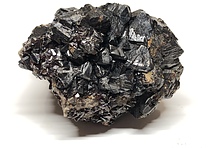Home PageAbout MindatThe Mindat ManualHistory of MindatCopyright StatusWho We AreContact UsAdvertise on Mindat
Donate to MindatCorporate SponsorshipSponsor a PageSponsored PagesMindat AdvertisersAdvertise on Mindat
Learning CenterWhat is a mineral?The most common minerals on earthInformation for EducatorsMindat ArticlesThe ElementsThe Rock H. Currier Digital LibraryGeologic Time
Minerals by PropertiesMinerals by ChemistryAdvanced Locality SearchRandom MineralRandom LocalitySearch by minIDLocalities Near MeSearch ArticlesSearch GlossaryMore Search Options
The Mindat ManualAdd a New PhotoRate PhotosLocality Edit ReportCoordinate Completion ReportAdd Glossary Item
Mining CompaniesStatisticsUsersMineral MuseumsClubs & OrganizationsMineral Shows & EventsThe Mindat DirectoryDevice SettingsThe Mineral Quiz
Photo SearchPhoto GalleriesSearch by ColorNew Photos TodayNew Photos YesterdayMembers' Photo GalleriesPast Photo of the Day GalleryPhotography
╳Discussions
💬 Home🔎 Search📅 LatestGroups
EducationOpen discussion area.Fakes & FraudsOpen discussion area.Field CollectingOpen discussion area.FossilsOpen discussion area.Gems and GemologyOpen discussion area.GeneralOpen discussion area.How to ContributeOpen discussion area.Identity HelpOpen discussion area.Improving Mindat.orgOpen discussion area.LocalitiesOpen discussion area.Lost and Stolen SpecimensOpen discussion area.MarketplaceOpen discussion area.MeteoritesOpen discussion area.Mindat ProductsOpen discussion area.Mineral ExchangesOpen discussion area.Mineral PhotographyOpen discussion area.Mineral ShowsOpen discussion area.Mineralogical ClassificationOpen discussion area.Mineralogy CourseOpen discussion area.MineralsOpen discussion area.Minerals and MuseumsOpen discussion area.PhotosOpen discussion area.Techniques for CollectorsOpen discussion area.The Rock H. Currier Digital LibraryOpen discussion area.UV MineralsOpen discussion area.Recent Images in Discussions
Mineralogical ClassificationChevkinite-(Ce) structure (Can.Min.)

1st Oct 2004 19:08 UTCMarco E. Ciriotti
The crystal structure of annealed chevkinite-(Ce), ideally (REE,Ca)4 Fe2+ (Ti,Fe3+,Nb)4 Si4 O22, monoclinic, C2/m, crystal (2an) a 13.400(1), b 5.7232(4), c 11.0573(9) Å, β 100.537(2)°, V 833.7(2) Å3 and crystal (3an) a 13.368(2), b 5.7243(6), c 11.041(1) Å, β 100.516(1)°, V 830.7(2) Å3; Z = 2, from Mongolia, has been solved by direct methods and refined to R1 values of 6.3 and 5.7% using 1287 and 1180 unique (|Fo| > 4σF) reflections collected with a single-crystal diffractometer and MoKα radiation. Electron-microprobe analysis gave: crystal (2an) SiO2 18.81, TiO2 15.66, FeO 11.33, MnO 0.24, CaO 1.61, Nb2O5 1.55, ThO2 0.40, Y2O3 0.30, Ce2O3 23.45, La2O3 13.92, Nd2O3 6.88, Pr2O3 1.95, Sm2O3 0.51, Gd2O3 0.42, HfO2 0.01, ZrO2 0.28, sum 97.32 wt.%, and crystal (3an) SiO2 18.53, TiO2 16.11, FeO 12.62, MnO 0.31, BaO 0.02, CaO 1.21, Nb2O5 1.69, ThO2 0.10, Y2O3 0.30, Ce2O3 24.30, La2O3 12.94, Nd2O3 8.13, Pr2O3 2.44, Sm2O3 0.82, Gd2O3 0.36, HfO2 0.16, ZrO2 0.08, Ta2O5 0.03, WO3 0.02, sum 100.17 wt.%. The corresponding chemical formulae are: (2an): (Ce1.85 La1.11 Nd0.53 Pr0.15 Sm0.04 Gd0.03 Ca0.32 Th0.02)Σ4.05 (Fe2+0.85 Mn2+0.04 Zr0.03 Y0.03 Ca0.05)Σ1.00 (Ti2.54 Fe3+1.19 Nb0.15)Σ3.88 Si4.06 O22 and (3an): (Ce1.88 La1.01 Nd0.61 Pr0.19 Sm0.06 Gd0.03 Ca0.27 Y0.03 Th0.01)Σ4.08 (Fe2+0.93 Mn0.06 Zr0.01)Σ1.00 (Ti2.55 Fe3+1.29 Nb0.16)Σ4.00 Si3.91 O22 based on 13 cations per formula unit. Infrared spectra of unannealed crystals suggest significant radiation-induced damage. The structures of two unannealed crystals were refined, but there are major discrepancies (~13%) between the sums of the site-scattering values at the octahedrally coordinated M sites and the analogous values calculated from the chemical compositions determined by electron-microprobe analysis. These discrepancies were not present when data were collected on annealed crystals, indicating that the original crystals are partly metamict and that this can significantly affect the results of site-scattering refinement. In the crystal structure of chevkinite, there are two distinct (SiO4) tetrahedra that share one vertex to form an group: <Si–O> = 1.614 (2an) and 1.612 (3an) Å, <Si(1)–O(8)–Si(2)> = 172.0° (2an) and 170.6° (3an). There are four octahedrally coordinated M sites that are occupied by small- to medium-sized divalent to pentavalent cations. The M(1) site is occupied dominantly by Fe2+ with minor Mn2+, and the M(2), M(3) and M(4) sites are occupied by Ti, Fe3+ and Nb. There are two A-sites that are occupied by REE and minor Ca and Th, with <A–O> = 2.56 (2an) and 2.55 (3an) (<8>-coordinated) and 2.66 (2an) and 2.55 (3an) Å (<10>-coordinated). There are two crystallographically distinct rutile-like chains of octahedra ( and ) that extend in the b direction and link to form a layer of octahedra parallel to (001). The layers of octahedra link through groups to form a framework with two interstitial A sites, CN = <8> and <10>, in which Ce is dominant over other REE, Ca and Th.




Mindat.org is an outreach project of the Hudson Institute of Mineralogy, a 501(c)(3) not-for-profit organization.
Copyright © mindat.org and the Hudson Institute of Mineralogy 1993-2024, except where stated. Most political location boundaries are © OpenStreetMap contributors. Mindat.org relies on the contributions of thousands of members and supporters. Founded in 2000 by Jolyon Ralph.
Privacy Policy - Terms & Conditions - Contact Us / DMCA issues - Report a bug/vulnerability Current server date and time: May 12, 2024 17:34:34
Copyright © mindat.org and the Hudson Institute of Mineralogy 1993-2024, except where stated. Most political location boundaries are © OpenStreetMap contributors. Mindat.org relies on the contributions of thousands of members and supporters. Founded in 2000 by Jolyon Ralph.
Privacy Policy - Terms & Conditions - Contact Us / DMCA issues - Report a bug/vulnerability Current server date and time: May 12, 2024 17:34:34











